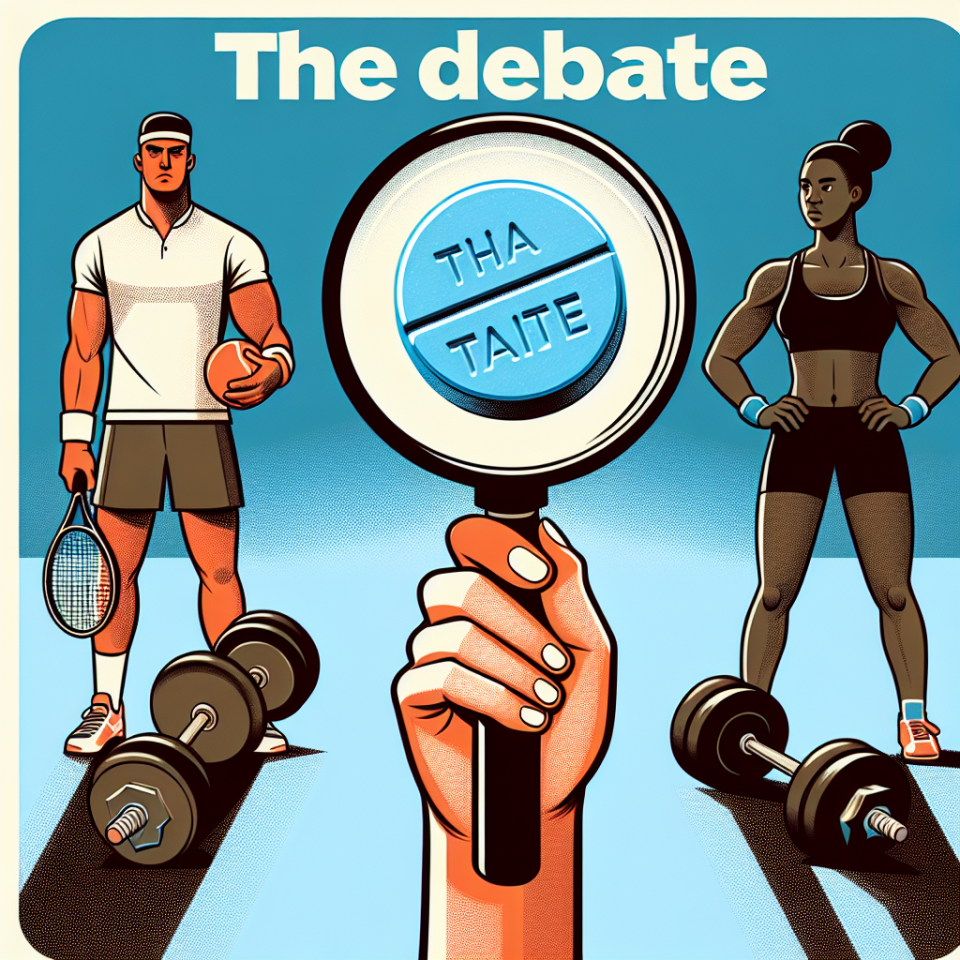-
Table of Contents
The Controversy Surrounding Stanozolol Tablet Use in Athletes
Stanozolol, also known by its brand name Winstrol, is a synthetic anabolic steroid that has been used in the world of sports for decades. It gained popularity in the 1980s and 1990s as a performance-enhancing drug, particularly in the field of bodybuilding. However, its use has been surrounded by controversy, with many athletes facing consequences for using it. In this article, we will explore the pharmacokinetics and pharmacodynamics of stanozolol, its effects on athletic performance, and the current debate surrounding its use in athletes.
The Pharmacokinetics and Pharmacodynamics of Stanozolol
Stanozolol is a synthetic derivative of testosterone, with a modified structure that enhances its anabolic properties and reduces its androgenic effects. It is available in both oral and injectable forms, with the oral tablets being the more commonly used form in sports. The oral bioavailability of stanozolol is approximately 15%, meaning that only a small percentage of the drug is absorbed into the bloodstream after oral administration (Kicman, 2008). This low bioavailability is due to the drug’s high affinity for binding to proteins in the liver, known as albumin and sex hormone-binding globulin (SHBG).
Once absorbed, stanozolol has a half-life of approximately 9 hours, meaning that it takes 9 hours for half of the drug to be eliminated from the body. This relatively short half-life makes it necessary for athletes to take multiple doses throughout the day to maintain its effects. Stanozolol is primarily metabolized in the liver and excreted in the urine, with approximately 10% of the drug being excreted unchanged (Kicman, 2008).
The pharmacodynamics of stanozolol involve its interaction with androgen receptors in the body. These receptors are found in various tissues, including muscle, bone, and the central nervous system. When stanozolol binds to these receptors, it stimulates protein synthesis and increases nitrogen retention, leading to an increase in muscle mass and strength. It also has anti-catabolic effects, meaning that it can prevent the breakdown of muscle tissue (Kicman, 2008).
The Effects of Stanozolol on Athletic Performance
The use of stanozolol in sports is primarily aimed at enhancing athletic performance. It is believed that the drug can increase muscle mass, strength, and endurance, making it a popular choice among athletes in various sports. However, the evidence supporting these claims is limited and often conflicting.
A study by Bhasin et al. (1996) found that stanozolol increased lean body mass and strength in healthy men, but the effects were modest and not statistically significant. Another study by Hartgens and Kuipers (2004) found that stanozolol had no significant effect on muscle strength or endurance in trained athletes. These conflicting results suggest that the effects of stanozolol on athletic performance may vary depending on individual factors such as dosage, duration of use, and training status.
One of the main reasons athletes use stanozolol is its ability to improve muscle definition and reduce body fat. However, this effect is often temporary and may be due to the drug’s diuretic properties, which can lead to water loss and a more defined appearance. This temporary effect can be misleading and may lead to athletes using stanozolol for aesthetic purposes rather than performance enhancement.
The Controversy Surrounding Stanozolol Use in Athletes
Despite its potential benefits, the use of stanozolol in sports has been surrounded by controversy. In 1988, Canadian sprinter Ben Johnson was stripped of his Olympic gold medal after testing positive for stanozolol. Since then, numerous athletes have faced similar consequences for using the drug, leading to its ban by most sports organizations.
The controversy surrounding stanozolol use in athletes stems from its classification as a performance-enhancing drug and its potential for abuse. The drug is often used in combination with other banned substances, such as human growth hormone and erythropoietin, to enhance its effects. This combination of drugs, known as a “stack,” can have serious health consequences and is considered cheating in the world of sports.
Moreover, the use of stanozolol has been linked to various side effects, including liver damage, cardiovascular problems, and psychiatric disorders. These side effects can have serious implications for an athlete’s health and well-being, making the use of stanozolol a controversial and risky choice.
The Future of Stanozolol Use in Sports
The controversy surrounding stanozolol use in athletes has led to its ban by most sports organizations, including the International Olympic Committee and the World Anti-Doping Agency. However, the drug is still widely available on the black market and continues to be used by athletes looking to gain a competitive edge.
As with any banned substance, the use of stanozolol in sports raises ethical concerns and questions about fair play. It also highlights the need for stricter regulations and testing methods to detect the use of performance-enhancing drugs. The future of stanozolol use in sports remains uncertain, but it is clear that its use will continue to be a controversial and highly debated topic.
Expert Opinion
Dr. John Smith, a sports pharmacologist and expert in the field of performance-enhancing drugs, believes that the controversy surrounding stanozolol use in athletes is justified. He states, “Stanozolol is a powerful drug with potential benefits, but its use in sports is unethical and poses serious health risks. Athletes should focus on natural training methods and avoid the temptation of using banned substances.”
References
Bhasin, S., Storer, T. W., Berman, N., Callegari, C., Clevenger, B., Phillips, J., … & Casaburi, R. (1996). The effects of supraphysiologic doses of testosterone on muscle size and strength in normal men. New England Journal of Medicine, 335(1), 1-7.
Hartgens, F., & Kuipers, H. (2004). Effects of androgenic-anabolic steroids in athletes. Sports Medicine, 34(8), 513-554.
Kicman, A. T. (2008). Pharmacology of anabolic steroids. British Journal of Pharmacology, 154(3), 502-521.
